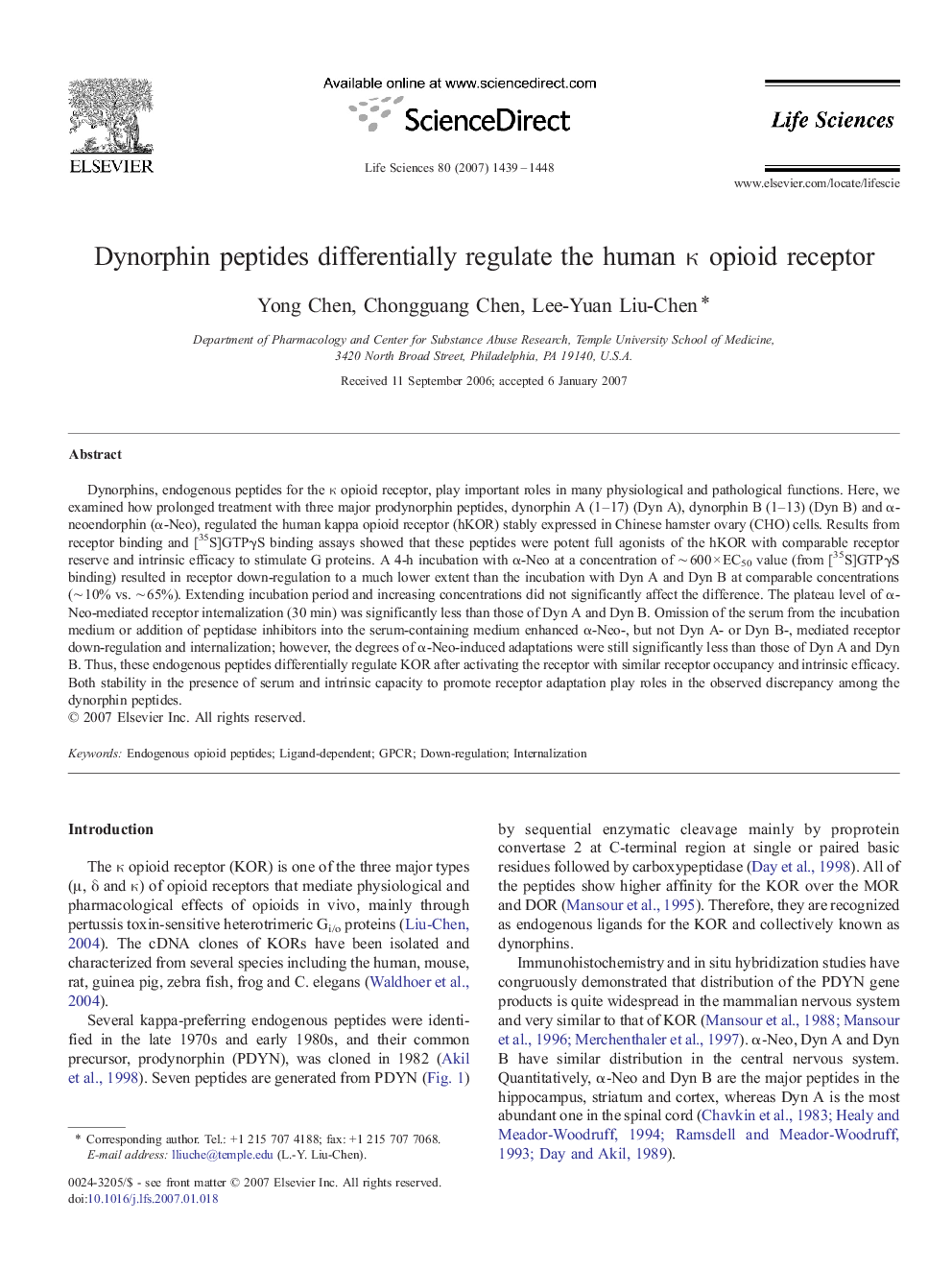| Article ID | Journal | Published Year | Pages | File Type |
|---|---|---|---|---|
| 2552814 | Life Sciences | 2007 | 10 Pages |
Abstract
Dynorphins, endogenous peptides for the κ opioid receptor, play important roles in many physiological and pathological functions. Here, we examined how prolonged treatment with three major prodynorphin peptides, dynorphin A (1-17) (Dyn A), dynorphin B (1-13) (Dyn B) and α-neoendorphin (α-Neo), regulated the human kappa opioid receptor (hKOR) stably expressed in Chinese hamster ovary (CHO) cells. Results from receptor binding and [35S]GTPγS binding assays showed that these peptides were potent full agonists of the hKOR with comparable receptor reserve and intrinsic efficacy to stimulate G proteins. A 4-h incubation with α-Neo at a concentration of â¼Â 600 Ã EC50 value (from [35S]GTPγS binding) resulted in receptor down-regulation to a much lower extent than the incubation with Dyn A and Dyn B at comparable concentrations (â¼Â 10% vs. â¼Â 65%). Extending incubation period and increasing concentrations did not significantly affect the difference. The plateau level of α-Neo-mediated receptor internalization (30 min) was significantly less than those of Dyn A and Dyn B. Omission of the serum from the incubation medium or addition of peptidase inhibitors into the serum-containing medium enhanced α-Neo-, but not Dyn A- or Dyn B-, mediated receptor down-regulation and internalization; however, the degrees of α-Neo-induced adaptations were still significantly less than those of Dyn A and Dyn B. Thus, these endogenous peptides differentially regulate KOR after activating the receptor with similar receptor occupancy and intrinsic efficacy. Both stability in the presence of serum and intrinsic capacity to promote receptor adaptation play roles in the observed discrepancy among the dynorphin peptides.
Related Topics
Health Sciences
Medicine and Dentistry
Cardiology and Cardiovascular Medicine
Authors
Yong Chen, Chongguang Chen, Lee-Yuan Liu-Chen,
